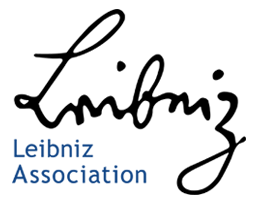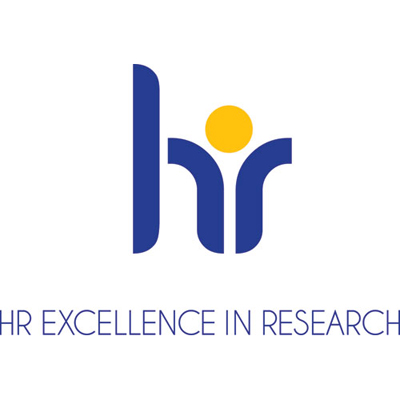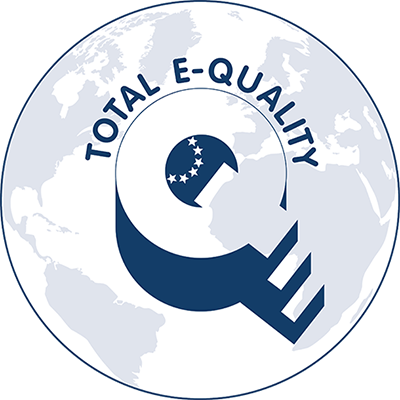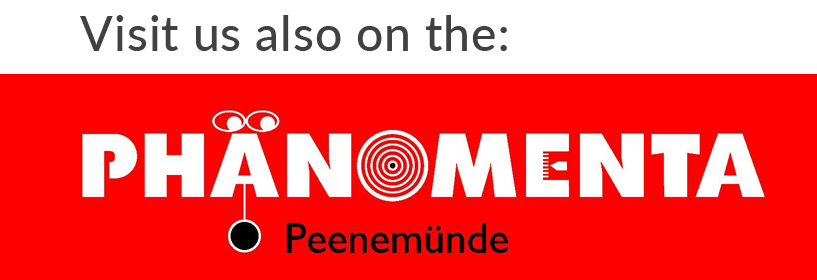2022
CAMPFIRE Symposium: new ammonia technologies spur climate-friendly energy transition and create security of supply
On 21 October 2022, around 100 national and international stakeholders from business, politics and research met for the CAMPFIRE Symposium 2022 at the Ozeaneum Stralsund. Under the motto "Green ammonia technologies for energy security, climate protection and economic growth", companies presented their plans for new applications and implementation concepts. Ammonia is an ideal storage medium for hydrogen and can also serve as a fuel for ships and trains.
The current gas crisis proves the urgent need for the energy turnaround, away from fossil fuels and towards renewable energies. Ammonia will play a central role in this. Known from the fertiliser industry, ammonia (NH3) is increasingly used worldwide as an energy source for green electricity and hydrogen. It enables the use of hydrogen in many areas, as ammonia can be stored and transported much more easily, efficiently and cheaply. As the second most produced chemical in the world, ammonia is already shipped in large quantities around the world's oceans and transported on land to customers by pipeline, rail and truck. Green ammonia produced from renewable energy is therefore increasingly seen as a game changer for the energy transition and key to security of supply.
CAMPFIRE symposium on the commercialisation of ammonia energy technologies
This year's symposium of the CAMPFIRE alliance focused on the global entrepreneurial implementation of ammonia technologies and emerging hydrogen value chains. CAMPFIRE is coordinated by the Leibniz Institute for Plasma Science and Technology in Greifswald. Together with more than 70 partners, the alliance is developing new technologies for the production and import of green ammonia and its use as energy storage and fuel. In Stralsund, regional, national and international partners met on the initiative of CAMPFIRE to exchange information on global developments in the new energy sector of ammonia. The focus was on presentations by well-known, market-leading companies such as Thyssenkrupp, Solarlite, Maersk Zero Carbon Shipping, Hereaus Deutschland, YARA Clean Ammonia and the Ammonia Energy Association. The presentations and discussions revolved around technologies for the production and transport of ammonia, its conversion back to hydrogen and its use as a fuel for ships. Special highlights were the presentation of the Finnish Green Ammonnia project "Green NortH2 Energy" and the "Daure Geen Hydrogen" project in Erongo, Namibia. An important input for the market ramp-up of hydrogen from an investor's perspective was given to the participants by Senco Hydrogen Capital.
Green ammonia as an economic driver for Mecklenburg-Vorpommern
The technology ramp-up of green ammonia technologies from the German state Mecklenburg-Vorpommern was explained to the participants by Jens Wartmann, Head of Strategy and Technology in the CAMFIRE alliance. The first spin-offs from the alliance are planned with the start-ups Green Ammonia Power, AmmoPro and CAMPFIRE AG. Jens Wartmann explains: "With the current rapid market ramp-up of ammonia, we expect that technology leadership for our regional companies and their business partners can be achieved within a short period of time. Sustainable business models for ammonia technologies should be possible as early as 2025."
Spokesperson and coordinator of the CAMPFIRE alliance Dr Angela Kruth adds: "After a very dynamic research and development phase of our technological solutions for the future ammonia energy system, we are now looking forward to the entrepreneurial realisation of our goals and the commercialisation of high technology from the region. In the future, our new start-ups will manufacture and export technologies for power-to-ammonia and ammonia-to-power worldwide in association with regional companies and through partnerships with large-scale industry and investors. The economic potential for the region is high and includes the sectors of plant construction, energy technology, energy trading, special machine construction, shipbuilding and automation technology."
Visitors to the CAMPFIRE symposium were able to find out about fuel cell systems, ammonia crackers and key components of electrolysers and ammonia production reactors at an on-site exhibition. Further solutions were presented by the regionally producing companies Sunfire Fuel Cells GmbH and Gesmex Exchangers GmbH as well as the planned spin-off 'Plasmafilm' from the Leibniz Institute for Plasma Science and Technology.
About CAMPFIRE
The federally funded CAMPFIRE alliance was founded in 2018 as part of the BMBF programme "WIR! - Change through Innovation in the Region". It provides an initial spark for sustainable structural change in the North-East region of Germany by building innovative pathways and unlocking economic benefits for small and medium-sized enterprises based here. The now more than 70 partners are implementing technologies for the production and import of green ammonia and its use as fuel for shipping and energy storage. CAMPFIRE technology development is currently being funded with around 55 million euros as part of the BMBF WIR! programme, in the TransHyDE lead project of the BMBF's "Green Hydrogen" ideas competition, in the Horizon2020 FETProActiv and in the BMWK IGF AiF. Through CAMPFIRE, strong partnerships of regional small and medium-sized enterprises with a financially strong large-scale industry and scientific institutions as well as an international visibility of the German state of Mecklenburg-Vorpommern and the Uckermark in the thematic field of ammonia and hydrogen have been created in recent years.
Contact:
Dr. Angela Kruth
Coordinator & Spokesperson CAMPFIRE
Leibniz Institute for Plasma Science and Technology (INP)
Phone: +49 3834 554 3860
Fax: +49 3834 554 301
Mail: angela.kruthinp-greifswaldde
https://wir-campfire.de/
Jens Wartmann
Head of Strategy Development and Technology CAMPFIRE
Zentrum für BrennstoffzellenTechnik GmbH (ZBT)
Phone: +49 203 7598 3336 Fax: +49 203 7598 2002
Mail: j.wartmannzbtde
https://wir-campfire.de/
Stefan Gerhardt
Press Spokesman
Leibniz Institute for Plasma Science and Technology (INP)
Phone: +49 3834 554 3903
Mail: stefan.gerhardtinp-greifswaldde
https://www.leibniz-inp.de
Greifswald, 24.10.2022

Research with tradition: INP in Greifswald celebrates 30th anniversary

Greifswald, 23 September 2022
The Leibniz Institute for Plasma Science and Technology (INP) will celebrate its 30th anniversary next week. Guests of honour from research, politics, business and society will celebrate this special event together with the approximately 200 employees of the institute in Greifswald. In addition to a ceremony, the INP will provide insights into its work with laboratory tours. Scientists will show the invited guests exclusively what they are currently researching. They explain what is important in their work and illustrate why low-temperature plasma research is so significant for science, society and industry. INP conducts research and development from idea to prototype and can look back on numerous innovations that have gained a foothold in business, medicine and industry.
The topics focus on the challenges of our time. Currently, the focus is on plasmas for materials and energy, environment and bioeconomy, and hygiene and health. Through its involvement in regional research projects such as Campfire, Physics for Food, biogeniV and the Forschungsfabrik MV (Hydrogen Research Factory MV), INP is also working on innovations for renewable energies and more environmentally friendly agriculture in Mecklenburg-Vorpommern.
Prof. Dr. Klaus-Dieter Weltmann, Director of the INP, explains: "We are proud of the research and transfer results that INP has achieved over the last three decades. Our claim is to make an important contribution to society with application-oriented basic research and to provide innovative ideas, for example for the energy transition, medicine and sustainable food production."
Founded in 1992 in Greifswald, the Leibniz Institute for Plasma Science and Technology e.V. (INP) is today the largest non-university research institute on low-temperature plasmas in Europe. Organised as a non-profit association, the INP has belonged to the Leibniz Association since its foundation.
Plasma research has a long tradition in Greifswald. For more than a hundred years, scientists in the Hanseatic city have been experimenting with ionised gases. If energy is added to a gas, a plasma is created, also known as the fourth state of matter. The natural phenomenon of plasma is found, for example, in the sun, in the northern lights or in lightning. Plasmas are used in a variety of technical products. Lighting, screens, scratch-resistant surfaces, microelectronic components or mirroring of glass and similar surfaces are based on plasma technology today. Welding, electrical switches, solar systems or fuel cells would also be inconceivable without plasma research. New plasma processes enable the healing of wounds, the disinfection of food or the purification of wastewater.
Judith Pirscher, State Secretary of the Federal Ministry of Education and Research, Bettina Martin, Minister for Science, Culture, Federal and European Affairs of the State of Mecklenburg-Vorpommern, Prof. Dr. Martina Brockmeier, President of the Leibniz Association, Dr. Stefan Fassbinder, Mayor of the City of Greifswald, Prof. Dr. Katharina Riedel, Rector of the University of Greifswald, and Dr. Thomas Hammer, Siemens, congratulate this research with tradition, which has made a name for itself nationally and internationally over the past 30 years. Afterwards, Prof. Dr. Holger Kersten from the Christian Albrechts University in Kiel will give a guest lecture on current aspects of plasma research.
For further information:
Stefan Gerhardt // Communication Department
Tel.: +49 3834 554 3903 // stefan.gerhardtinp-greifswaldde
Felix-Hausdorff-Straße 2 // 17489 Greifswald // www.leibniz-inp.de
Cold physical plasma kills corona viruses
Greifswald, 06 September 2022 - A Greifswald research team from the Centre of Excellence ZIK plasmatis at the Leibniz Institute for Plasma Science and Technology e.V. (INP) was able to demonstrate for the first time in laboratory experiments the inactivation of corona viruses by physical plasma. The new method promises innovative therapies for the corona pandemic and other infectious diseases.
Physical plasma, the so-called fourth state of matter, has been finding its way into medicine for several years. Clinical successes are increasingly being recorded, particularly in the healing of chronic wounds. The effectiveness is based, among other things, on the ability of cold physical plasma to effectively kill pathogens and thus fight wound infection.
Prevention and control of infections have become more important as a result of the Covid 19 pandemic. More than ever, new measures and approaches are needed to protect people and health systems from the consequences of the pandemic. Cold physical plasma can also play a role here. The effectiveness of plasma against a wide range of microorganisms, including multi-resistant pathogens, has been demonstrated many times. In contrast, there are comparatively few studies on the effectiveness against viruses.
In Greifswald, it has now been shown that the ability of viruses to penetrate cells is significantly reduced after contact with a newly developed plasma jet. In the specific experiment, hepatitis viruses from mice (MHV-A59-eGFP), which belong to the group of corona viruses, were treated. The effect is due to free radicals that are formed in the plasma.
Prof. Dr. Thomas von Woedtke, head of plasma medicine at INP, comments: "Our goal is a plasma device that can be used to combat viruses such as SARS-CoV-2 directly on the oral mucosa. The laboratory results are an important step in this direction. We were able to identify the mechanism of inactivation of the viruses. From this, a variety of new, innovative approaches for the therapy and prevention of pandemics and infections in general can be derived."
The study, currently published in the journal Free Radical in Biology & Medicine, was conducted as part of the project "PlasmaplusCorona - Plasma-based disinfection of the respiratory tract to reduce the SARS-CoV-2 viral load in vitro and in vivo", funded by the German Federal Ministry of Education and Research (BMBF) since 2021, in which a research network with the Leibniz Institute of Virology (LIV, Hamburg) and the Leibniz Lung Centre (FZB, Borstel) under the leadership of the Leibniz Institute for Plasma Science and Technology e. V. (INP) is researching a technical solution for the local treatment of the virus-infected respiratory tract.
Original article:
D.M. Mrochen, L. Miebach, H. Skowski, R. Bansemer, C.A. Drechsler, M. Hein, U. Mamat, T. Gerling, U. Schaible, T. von Woedtke, S. Bekeschus. Toxicity and virucidal activity of a neon-driven micro plasma jet on eukaryotic cells and a coronavirus. Free Radical Biology and Medicine (2022),
doi: https://doi.org/10.1016/j.freeradbiomed.2022.08.026
For further information:
Stefan Gerhardt // Communication Department
Tel.: +49 3834 554 3903 // stefan.gerhardtinp-greifswaldde
Felix-Hausdorff-Straße 2 // 17489 Greifswald // www.leibniz-inp.de/en




































